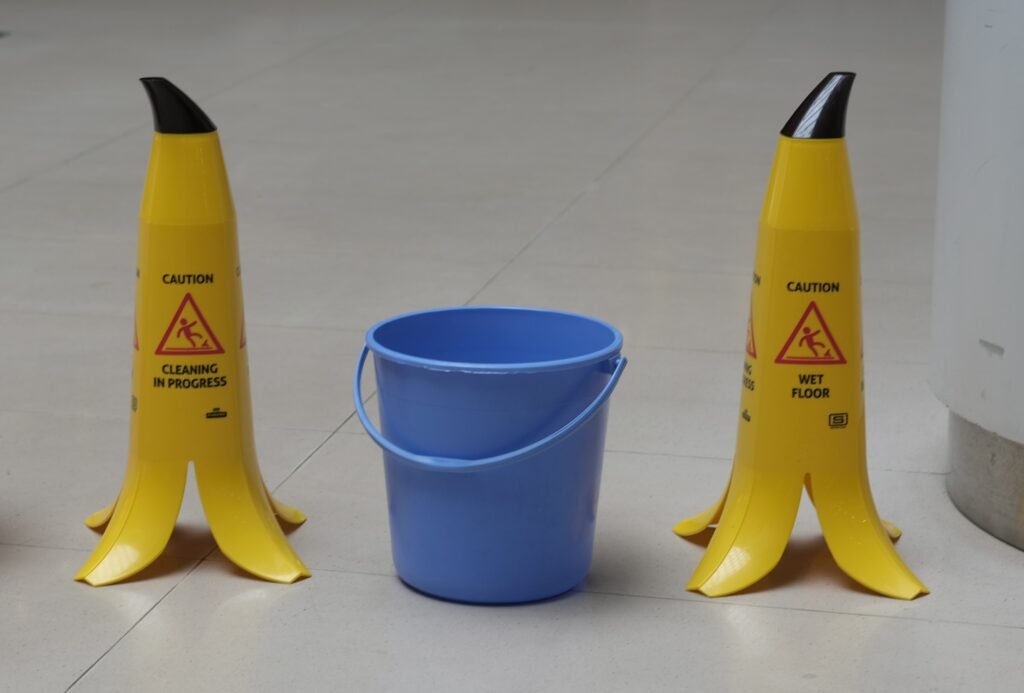Whenever anyone is working beyond a height that exceeds their own natural height, the risk of injury exponentially increases.
With falls from a height being the biggest killer of UK workers while on the job, every measure must be taken to prevent falls from happening in the first place. Furthermore, the biggest tragedy of any serious workplace accident including falls is that often, if proper safety protocols had been followed, that accident could have been avoided. At the very least, any injuries sustained could have been greatly minimised.
In today’s blog, we’re here to share our top tips for preventing slips and trips while working at a height. These types of incidents can easily lead to falls, which as we know pose a serious risk to the health and safety of employees.
Conduct A Through Health & Safety Assessment (Regularly)
Research has found that the UK has one of the worst attitudes towards health and safety of any country in Europe, with only Romania and Estonia polling below the UK.
Therefore, the first and best thing all workplaces can do to prevent slips, trips and falls is to ensure health and safety regulations aren’t ignored but actively encouraged and implemented. This requires a team effort from CEOs and management through to apprentices.
Conducting a professional health and safety assessment of your workplace will ensure it meets all current safety standards. Often, this is the best way to nip minor issues in the bud before they have a chance to turn into major safety issues. Highlight any findings, educate staff where necessary and most of all, ensure any issues are put right without delay.
“Engaging your employees in discussions about safety not only helps identify potential hazards but also empowers them to take ownership of their workplace safety. By seeking input from your workforce, you can gain a better understanding of the safety issues and concerns which can then be used to develop effective safety measures. Additionally, involving staff in safety discussions can help to foster a culture of safety where employees feel valued and supported, leading to increased motivation, engagement, and productivity.”
Lydia Benham, Health & Safety Consultant for Safety Services Direct

Wear Fall Protection Equipment
In the case of working at a height, this should be avoided entirely unless it is unavoidable. For example, in the case of inspections, is it possible to use drone technology?
While all industry requirements may differ, any safer alternatives that do not risk human life should always be explored.
Where workers are going to be working off the ground, they should have physical structures (i.e. guardrails or scaffolding) to prevent falls, and also wear fall protection equipment.
Examples of fall protection and work access products include:
Workers will require training in how to use whichever fall protection system is in use. All equipment must be inspected before each use to ensure it meets the correct standards and doesn’t have any defaults. Replace fall protection equipment if any defaults are found, if the equipment has expired, or if safety requirements have since been updated.
Safety Shoes & Safety Clothes
Slips and trips are far more likely to occur when the incorrect shoes and apparel are being worn. When such accidents happen at a height, they pose the additional risk of further injury including a serious fall.
Consider that surfaces may be wet or slippery, which is why safety footwear regulated to the industry and application needs to be worn.
Safety clothes should be the correct size and have no features which may encourage the likelihood of slips and trips. Once again, the clothing should meet industry standards (including ISO standards) for the application type.
Be On The Lookout For Slipping, Tripping Or Falling Hazards
While working at height or on the ground, your team should be aware of any potential hazards that could cause slips, trips or falls.
For instance, loose cabling, patches of water, lack of safety signage, a lack of safety equipment being worn etc.
Ensure any such hazards are identified, reported and rectified immediately.
Fall Protection Equipment For Working At Height – Metreel
Working at height poses a serious risk of injury or death. The best way to protect your workforce from injury, and your company from legal action is to ensure workers are properly protected with fall protection equipment.
Working across a variety of industries, Metreel is a leading UK manufacturer of fall protection equipment. We can advise on any safety issues and ensure your team have everything they need to carry out their duties safely and efficiently.
You can also download our free brochure to discover more about our product specifications by visiting our product brochure page. If you’re ready to place an order or have any questions, please give us a call on 0115 647 0422 or email us at [email protected].